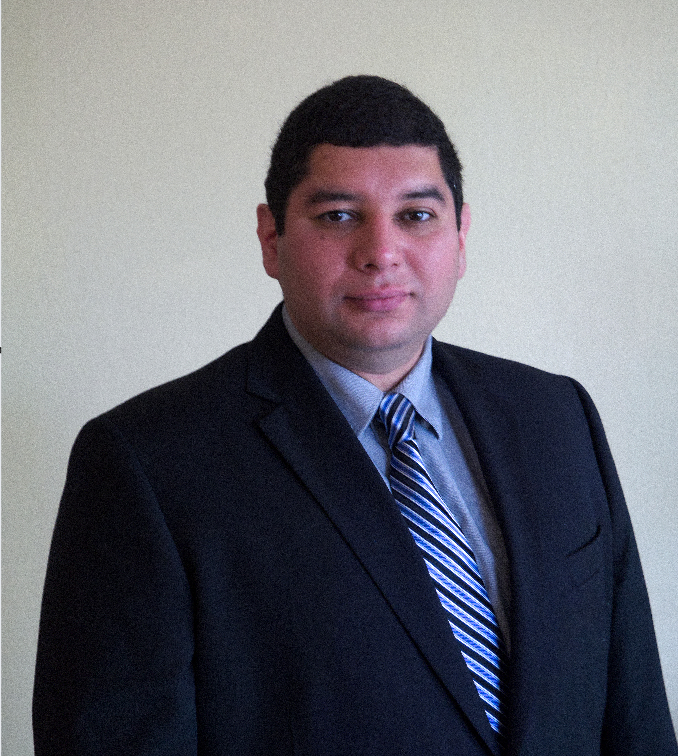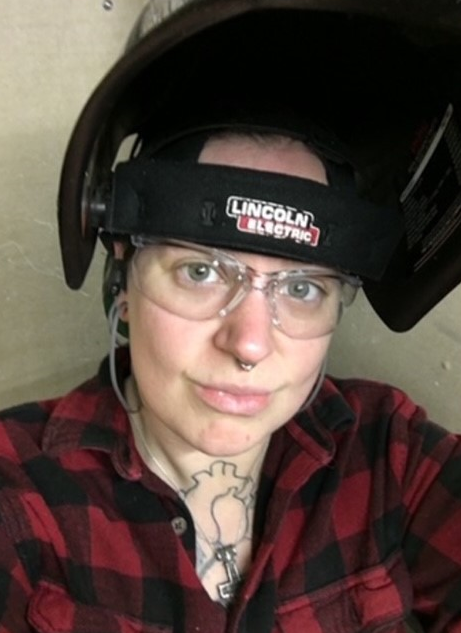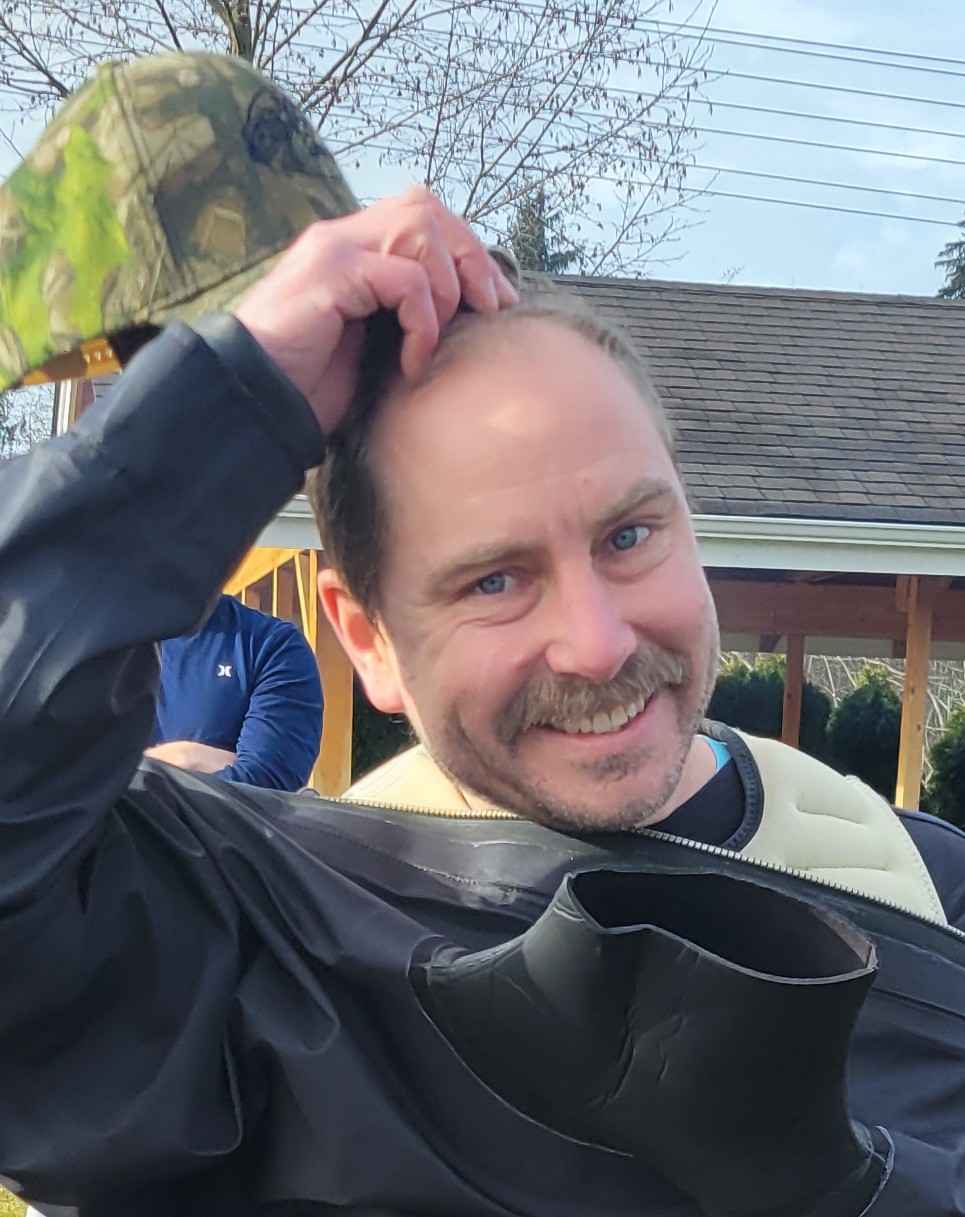Appendix 4: About the Authors
Douglas Rupik, M.Ed., JIW

I have been welding for a living since 1989. I spent several years in fabrication and manufacturing then worked in the construction industry since 2000 as a member of Ironworker’s Local Union #86.
I taught in the Ironworker’s Apprenticeship from 2007 to 2014, and in the state college system since 2010, teaching at Bates Technical College, Lake Washington Institute of Technology, and South Seattle College.
In addition to being a Journeyman Ironworker (JIW), I am an American Welding Society (AWS) Certified Welding Inspector (CWI) and Certified Welding Educator (CWE). I am a certified welder in SMAW, GMAW, FCAW and GTAW, in plate, pipe, rebar, and sheet metal.
I am honored to contribute to this project, and I hope it helps your career.
David Ridge

Photo by Jessica Youderian
I started welding when I was a sophomore in highschool, back in 2004. Since then, I have gained 16+ years of professional welding experience on the job, including 5 years as a welding teacher at Skagit Valley College. My time in the field has been spent as a ship builder, aluminum boat builder, boilermaker, and a general fabricator. I have been a Certified Welding Inspector (CWI) through the American Welding Society (AWS) since 2019. I am a Certified Welder in SMAW and FCAW through the Washington Association of Building Officials (WABO). It is a pleasure to have the opportunity to share my knowledge with others through this book, and my sincere hope that it can help many people begin a successful career in welding. When I started my career in welding, I was told I would always have a job, and I always have.
David Colameco, M.Ed.

My father loved photography and he took this picture of me. He was a medical doctor who specialized in treating people with chronic pain who were also overcoming addiction. Of all of the things I have done, he was most proud of the work I am doing teaching welding courses and helping to improve student’s lives by connecting them with a career in a profession that they can be proud of.
I am relatively new to the welding profession and started welding for enrichment in 2018 at Everett Community College. Welding has always been an interest of mine and making the time for welding has opened so many doors for me including the opportunity to teach welding and see students get excited about career options they didn’t previously know about. You will find the Codes chapter of this book focusing on the uses of codes in industry in an effort to introduce you to new possibilities for your career.
My career has taken many exciting twists and turns over the years from being an Internal Communication Electrician in the US Navy in the early 2000’s, to going to The Pennsylvania State University from 2005-2012 for undergraduate and graduate studies for pursuing a career in nuclear engineering since 2012. My background has provided me the unique opportunity to teach in depth topics such as metallurgy which is affected by chemistry at the atomic level in a way that relates to what you see as a welder.
I am currently pursuing my sixth degree, a masters in Welding Engineering from The Ohio State University, I am a CWI, and I look forward to working on projects that involve resistance welding and in the future possibly high energy density processes such as electron beam welding and laser beam welding. I hope that my excitement for welding encourages you to maximize your welding career by taking chances and stepping up to reach out for new and exciting opportunities. Your career truly is the sum of all of your efforts, let’s get started.
Stephanie Oostman

I was first introduced to welding and fabrication in the early 90’s. My father and grandfather owned their own business building generators for diesel engine sailboats, and I would spend some time in their shop soldering wiring harnesses together, using rivet guns, learning equipment like chop saws and drill presses. My grandfather had an oxy-fuel welding equipment which he occasionally used, though I never did. After my teenage years I left their shop, and never gave trades a second thought. Nearly twenty years later I entered into a welding program, and completed my associate’s degree in welding fabrication technology. I was able to start employment as a welder prior to completing my degree, and spent most of my time in industry as an aerospace TIG welder. I was fortunate to hone my skills, and spent a majority of my time welding stainless, titanium and inconel.
I have been teaching welding in professional technical programs since 2019. While I was a TIG welder for a living prior to teaching, I love SMAW, FCAW and CAC-A.
After his death, I inherited my grandfather’s OAW equipment, and still have it to this day.
Cameron Kjeldgaard

In late 2012 I made the decision to return to my home town of Spokane Washington. This decision came on the heels of my grandfather’s death and my own disillusionment with the lifestyle I’d been living. I’d spent the first six or so years of my adult life traveling the country. Moving throughout the year to chase low-skill seasonal work. Harvesting sugar beets in North Dakota, packaging fish at a cannery in Alaska, farming shellfish in the Puget Sound, working gem and mineral exhibitions in Arizona. That life was an adventure, but one that was tiring, and one that kept me far away from my family. So I decided to return home and pursue something, even if I didn’t know what it was yet.
It may as well have been a coin toss that landed me on the enrollment sheets of Spokane Community College’s Welding & Fabrication program. I was looking for something, anything, I could do to find stable, good-paying, work at home and they had an opening. I fell in love with it. Learning to weld is challenging, at times very frustrating, but every success boosted my confidence. In nine short months I graduated the Welding & Fabrication certificate program with honors, a job lined up before I’d even graduated.
From there my career took off. I’ve worn a lot of different hats in the industry. I’ve been a production welder, a fitter (an industry term for an assembler), a sawyer, a CNC machine operator, a quality control inspector, and today I am an instructor at the same institution I graduated from over a decade ago.
Learning to weld and fabricate has radically transformed my life, I’m not sure where I would be if I hadn’t made the decision to pursue it. It has become a career, and a passion; it’s a pursuit that can be both technical and artistic. It’s what gave me an opportunity to contribute to this wonderful book. It is my sincere hope that this book can be a small part of what helps kick off your own journey into a very fulfilling career.
Karl Fulton

My career started in the Navy on submarine tender USS Frank Cable (AS 40) where I spent my first 5 years in a highly competitive shop where I made some lifelong friends. I went on to run the general workshop on the USS Thach (FFG 43) and ended my 12 years in the Navy on the USS Essex (LHD 2) where I had the opportunity to run the weld shop as well as the machine shop. After leaving the Navy I went to school for welding where I learned that they train for production more than repair, which is what I was used to. The department head of the welding program at Everett Community College offered me a job teaching and it took a lot of convincing before I agreed. That was 2016 and I am running the welding department now and the welder qualification program. One of the key frustrations in education is the cost of the books for students. This frustration is accentuated in welding because of the initial equipment cost for a student to start welding. If you are using this book your instructor cares more about you than you might think.
Quill West, MAIS, MLS

I’m trained as a librarian, open educator, and instructional designer. My role, for Introduction to Welding, was as a designer and supporter for the experts who have written this book. I’m glad that I could help to design and author this book, especially because I am passionate about the values that open education resources, like this textbook, bring for learners and teachers. I hope that you find this textbook valuable for your profession.

